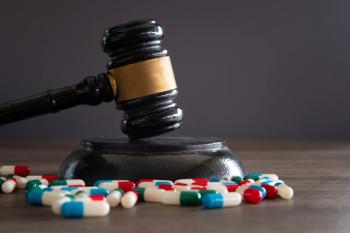
Viewpoint: Pharmacists really are the drug experts
I was jolted out of a sound sleep at around 2:00 A.M. The pain across my upper chest radiated from shoulder blade to shoulder blade. It was like nothing I had ever experienced before. Then the pain in my jaw began, like a box cutter slicing me from ear to ear. I could feel my heart beating faster. I felt nauseated and little lightheaded. But most of all, I felt an overwhelming sense of doom. I woke up my wife and told her what was happening. She took one look at me and said, "Pick your ER." The expression on her face confirmed what I already knew. I was having a heart attack.
I was jolted out of a sound sleep at around 2:00 A.M. The pain across my upper chest radiated from shoulder blade to shoulder blade. It was like nothing I had ever experienced before. Then the pain in my jaw began, like a box cutter slicing me from ear to ear. I could feel my heart beating faster. I felt nauseated and little lightheaded. But most of all, I felt an overwhelming sense of doom. I woke up my wife and told her what was happening. She took one look at me and said, "Pick your ER." The expression on her face confirmed what I already knew. I was having a heart attack.
When I arrived at the ER, I was connected to an EKG machine, blood was taken to check my cardiac enzymes, and I was administered a litany of drugs.
The attending ER physician made it official; I was indeed having a heart attack right then and there. Luckily for me an interventionist cardiologist just happened to be in the building at that ungodly hour. As I was being whisked off to the cardiac catheterization lab, I knew the potential scenarios that I faced: an angiogram, angioplasty, the placement of coronary stents, or cardiac bypass surgery.
I was told by the doctor that I had three blockages: two in my circumflex artery and one in my left anterior descending (LAD) artery. I had two Cypher stents implanted in the circumflex artery. A stent was placed in my LAD two months later.
I was very fortunate; because I got to the cardiac cath lab within the Golden Hour, my prognosis is good. I have no muscle damage to my heart.
Before leaving the hospital, I requested a consult with a pharmacist in person, to discuss my discharge drugs. A nurse told me that I already did that with my doctor, but if I insisted, she would have someone from the pharmacy call me. I received a call from a pharmacist about two hours later. The conversation lasted about three minutes, and I got the distinct feeling that this was not something she did routinely.
Two days after I returned home from the hospital, I developed a severe rash that began in my groin and covered my torso and upper back. It was itchy, even unbearable at times. I was concerned that it could be an allergic reaction to the drug-eluting stents, although such reactions are rare. I informed the interventionist cardiologist of the situation, and he told me it was most likely due to a reaction to one of the five oral drugs I was taking. He told me to take 25 mg of Benadryl to ease the symptoms and to discontinue the lisinopril and Lipitor (atorvastatin, Pfizer) temporarily. The drug he did not want to discontinue was Plavix (clopidogrel bisulfate, Sanofi-Aventis), which reduces the chances of in-stent restenosis.
By the following evening my rash was worse. I decided to call an old news source of mine, a cardiac pharmacist at the Texas Heart Institute in Houston. I described my symptoms and the location of the rash. Based on that information, he said he believed that it was an allergic reaction to the contrast medium (dye) used during the angiogram. He spent about 15 minutes on the phone with me, answered all my questions, and told me that this was not unusual. He instructed me to stay on the Benadryl and said the rash should subside in a couple of days. His advice and reassurance calmed my fears, but the itching did not abate. I tried calling him back the next day, but he was out of town.
I decided to put my trust in my Rite Aid pharmacist, whom I've known for years. He agreed with the cardiac pharmacist that the source of the rash was most likely the contrast medium. Then he asked me what dosage of Benadryl I was taking. I told him 25 mg. He said that was too low and instructed me to increase the dosage to 50 mg. I did, and within 24 hours the rash began to subside.
The lesson of my saga is how important it is that pharmacists play an active role in patient care. Assessing drug allergies and appropriate dosages-that is pharmacists' domain; that is what they are trained to do!
All patients deserve to be the recipients of a pharmacist's knowledge and expertise. In my case, early intervention by a pharmacist would have spared me unnecessary anxiety, apprehension, and great discomfort.
Newsletter
Pharmacy practice is always changing. Stay ahead of the curve with the Drug Topics newsletter and get the latest drug information, industry trends, and patient care tips.





























































































































